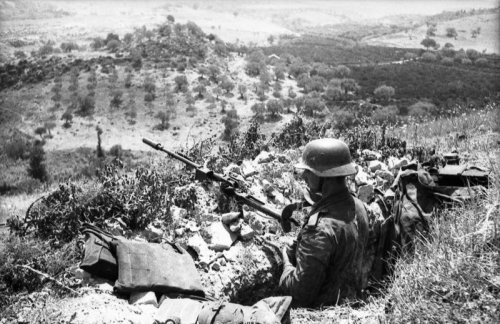peashooter85:The Panzerbusche 38 and 39,Successor to World War I anti-tank rifles, the Panzerbusche
peashooter85:The Panzerbusche 38 and 39,Successor to World War I anti-tank rifles, the Panzerbusche 38 and 39 were Germany’s main infantry portable anti tank rifles of the early years of World War II. Designed by Gustloff Werke engineer named B. Braeur, the PzB-38 was a single shot breechloading anti-tank rifle which fired a powerful 7.92x94mm cartridge. When fired, the barrel would recoil backwards 9 inches, thus sparing the operators shoulder, while also automatically ejecting the spent cartridge casing. Unfortunately the PzB-38 was prone to jamming, and was also very difficult to manufacture. Thus only 1,408 were produced. The PzB-39 was an improvement of the PzB-38, which featured manufacturing processes which were faster and cheaper than the earlier PzB-38. Likewise, improvements were made to the PzB-39′s recoiling mechanism to make it much more reliable. The PzB-39 would served as Germany’s premier anti tank rifle in the early stages of World War II, seeing action in Poland, France, and the Eastern Front. However as the war continued the thickness and size of both German and Allied tanks increased. Eventually, the PzB-39 became about as effective as a spittwad shooter in knocking out tanks. Production ended in 1941 with 39,232, though the rifles remained in used until 1944. When they became so inadequate that they couldn’t even harm lightly armored vehicles, many were converted into a grenade launcher called the Granatbusche 39. The GzB39 had an attachment on the barrel with which to attach a rifle grenade. Using a blank cartridge, the PzB39 could fire anti-personnel and anti-tank grenades hundreds of yards. -- source link
Tumblr Blog : peashooter85.tumblr.com




